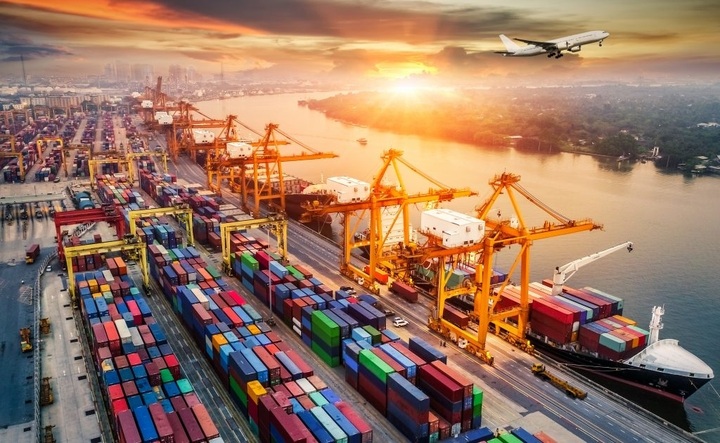
Illustrative photo
This year’s import-export target achievableThe MoIT reported that the first half of the year saw export turnover stand at an estimated US$190.08 billion, an increase of 14.5% over the same period from last year.
Of the figure, the domestic economic sector grossed US$53.39 billion, up 20.6%, and accounting for 28.1% of total export turnover. Elsewhere, the foreign-invested sector, including crude oil, reached US$136.69 billion, up 12.3%, making up for 71.9%.
Throughout the reviewed period, there were a total of 29 items with export turnover of over US$1 billion, duly accounting for 91.4% of total export turnover, with seven products with export turnover exceeding US$5 billion, accounting for 65.6%.
Trade promotion and export market expansion continued to achieve positive results, combining the exploitation of traditional markets with the expansion of new markets such as Africa, Eastern Europe, Northern Europe, and West Asia. Therefore, exports to the majority of the nation’s major markets and trading partners during the six-month period recorded strong recovery, with some markets witnessing double-digit growth.
In particular, the United States continued to be the country’s largest export market with an estimated turnover of US$54.3 billion, followed by China, the EU, and the Republic of Korea (RoK).
In the opposite direction, the first half saw the total import turnover hit US$178.45 billion, up 17% on-year, of which the domestic economic sector fetched US$65.74 billion, up 22.3%, and the foreign-invested sector brought in US$112.71 billion, up 14.1%.
The structure of imported goods during the January to June period showed positive signals when up to 88.8% of the total import turnover was the group of goods which needed to be imported, including machinery, equipment, tools, spare parts, and raw materials for domestic production.
The trade balance continued to maintain a high trade surplus of US$11.63 billion. Of which, the domestic economic sector recorded a trade deficit of US$12.35 billion and the foreign-invested sector, including crude oil, enjoyed a trade surplus of US$23.98 billion.
Up to now, exports have soared by 14.9% over the same period from last year, with a trade surplus of US$11.8 billion which can be viewed as a bright spot in terms of the overall picture of the Vietnamese economy.
Based on the assessment of these favourable and unfavourable factors, along with the current growth momentum, the export growth target of 6% for the entire year is entirely achievable.
Striving for the 2025 target
The industry and trade sector is striving to increase next year’s total export turnover to about 6% compared to 2024, with the trade balance maintaining a trade surplus of about US$15 billion.
As part of efforts to achieve this goal, the MoIT will continue to effectively implement strategic breakthroughs whilst restructuring sectors and fields to improve productivity, quality, efficiency, and overall competitiveness in the entire sector.
These efforts include promoting institutional reform and unlock resources, creating an open and favourable environment to support firms in restoring production and business, and resolutely carrying out important projects and key works.
Furthermore, it can be viewed as necessary to accelerate negotiations, selectively sign new free trade agreements (FTAs), fully and effectively utilise incentives brought about by signed FTAs to expand import and export markets, diversify partners and sources of goods, and also to limit dependence on a number of markets.
Simultaneously, it remains essential to effectively implement preventive solutions, improve trade defence capacity, provide early warning and resolve international trade and investment disputes, and proactively protect the legitimate interests of domestic manufacturing industries and the legitimate interests of businesses and people. This is in addition to speeding up the exploitation and development of the domestic market and develop Vietnamese brands, as well as strongly developing e-commerce and the connection between e-commerce and other types of commercial activities.
Moreover, Vietnamese trade offices abroad need to regularly update information relating to foreign market situations, regulations, standards, and conditions of foreign markets that may affect Vietnamese import and export activities and make recommendations to localities, associations, and import and export enterprises.
This is along with stepping up the progress and making efforts to swiftly conclude the negotiations on the Comprehensive Economic Partnership Agreement (CEPA) between the nation and the UAE, deploying a variety of forms both directly and online to introduce the advantages and incentives from the implemented FTAs to capitalise on the opportunities from agreements.
It is therefore imperative to continue to renew trade promotion activities with a particular focus on digital transformation programmes aimed at connecting supply and demand.




















